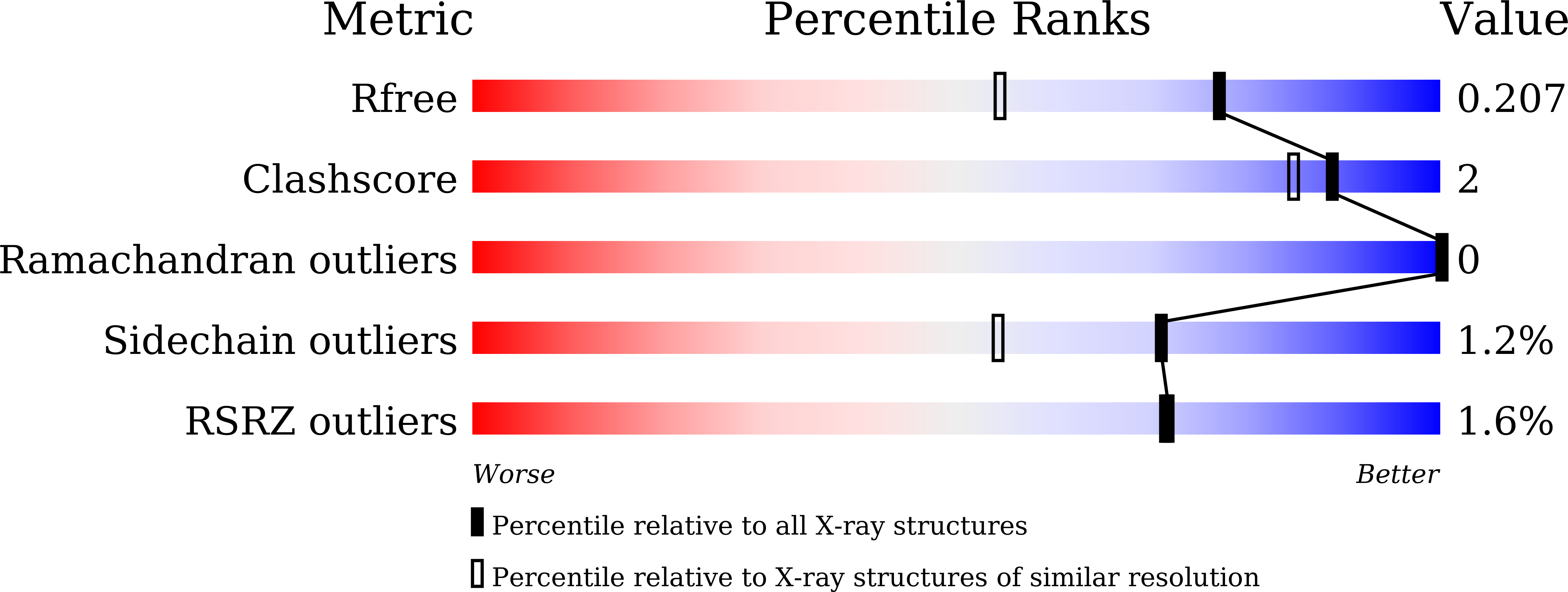Crystal structures of halohydrin hydrogen-halide-lyases from Corynebacterium sp. N-1074
Watanabe, F., Yu, F., Ohtaki, A., Yamanaka, Y., Noguchi, K., Yohda, M., Odaka, M.(2015) Proteins 83: 2230-2239
- PubMed: 26422370
- DOI: https://doi.org/10.1002/prot.24938
- Primary Citation of Related Structures:
4Z9F, 4ZD6, 4ZU3 - PubMed Abstract:
Halohydrin hydrogen-halide-lyase (H-Lyase) is a bacterial enzyme that is involved in the degradation of halohydrins. This enzyme catalyzes the intramolecular nucleophilic displacement of a halogen by a vicinal hydroxyl group in halohydrins to produce the corresponding epoxides. The epoxide products are subsequently hydrolyzed by an epoxide hydrolase, yielding the corresponding 1, 2-diol. Until now, six different H-Lyases have been studied. These H-Lyases are grouped into three subtypes (A, B, and C) based on amino acid sequence similarities and exhibit different enantioselectivity. Corynebacterium sp. strain N-1074 has two different isozymes of H-Lyase, HheA (A-type) and HheB (B-type). We have determined their crystal structures to elucidate the differences in enantioselectivity among them. All three groups share a similar structure, including catalytic sites. The lack of enantioselectivity of HheA seems to be due to the relatively wide size of the substrate tunnel compared to that of other H-Lyases. Among the B-type H-Lyases, HheB shows relatively high enantioselectivity compared to that of HheBGP1 . This difference seems to be due to amino acid replacements at the active site tunnel. The binding mode of 1, 3-dicyano-2-propanol at the catalytic site in the crystal structure of the HheB-DiCN complex suggests that the product should be (R)-epichlorohydrin, which agrees with the enantioselectivity of HheB. Comparison with the structure of HheC provides a clue for the difference in their enantioselectivity.
Organizational Affiliation:
Yokohama Research Laboratories, Mitsubishi Rayon Co. Ltd., Yokohama, Kanagawa, 230-0053, Japan.






















